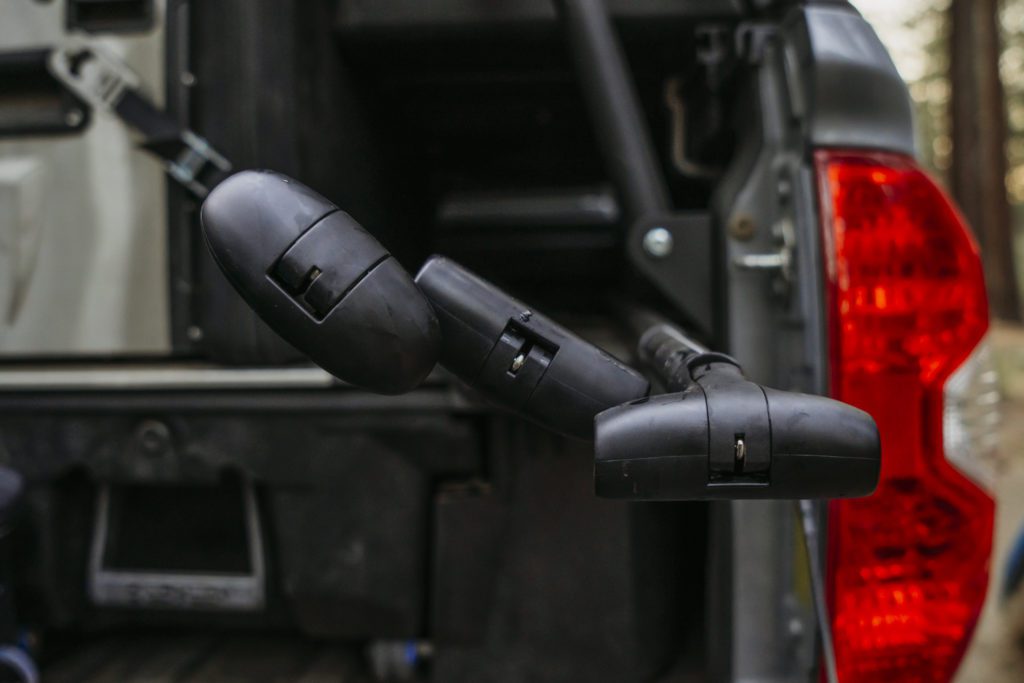Self-Guided Paddle Tour: Wildflower Identification
One of the best parts of paddling is soaking in the flora and fauna in the riparian zone (the interface between land and water, aka shoreline). With spring break blooms just around the corner, look for these blossoming beauties on a water way near you!
Wild Foxglove
Prolific throughout the US.
Iconic for its over weighted tall stem continuing innumerable bell shaped petals ranging from pink to purple. Although rarely witnessed in real life, individual flowers are imagined to fit the paw of a fox - hence the name. This flower is perhaps the most common on this list. Foxglove prefers well drained, woodland clearings, hedgerows and banks, heath ground cover, rocky hillsides and sea cliffs.

Bonneville Shooting Star
Appearing in the Pacific Northwest.
A little less common, you’ll know Shooting Star for its long, leafless maroon stem and usually crowning, clustered inside out looking flowers. It blooms in constellations adjacent to streams, creeks and lakesides at low to mid elevations. Petals are usually magenta turning to white then yellow near the base. Don’t forget to make a wish!

Wild Bog Orchid
Appearing in the Pacific Northwest and Northeast.
Though most orchids occur in tropical latitudes, there are some uncommon subalpine and evergreen forest species native to North America. In the northeast, the bog orchid appears on terrestrial features as well as shores of rivers, lakes, swamps and wetland margins. You’ll know it for its tiny white flowers blooming up stem with seasonal maturity.

Rocky Shoals Spider Lily
Appearing in the Southeast.
Rocky Shoals Spider Lilies are large, showy, spindly flowers on leafless stems. Seasonally, they grow in moist areas, including marshes, swamps, depressions and along the sides of streams and lakes in tropical and subtropical areas. Spider Lillies can be an integral part of a wetland system through aiding in trapping sediment and filtering water.

Bog Laurel
Appearing in the Pacific Northwest and Northeast.
A perennial evergreen shrub with pink or purple bell shaped flowers which grow lakeside in bogs and heath ground cover, the Bog Laurel is a harty creature. A favorite Central Oregon view (near Aquaglide headquarters) of this sub alpine jewel is from meadow lakes on the west side of the Cascade Range.

Elephanthead Lousewort
Appearing in the Northwest.
A density of blooms filling a thick stock, hundreds of little pink elephant heads on a leafy stem characterizes this flora. This wild flower circus sideshow performs from the Cascade Mountains down through the Sierra Nevadas.

Pacific Bleeding Heart
Appearing in the Pacific Northwest and Eastern seaboard.
Bleeding Heart is a bushy, perennial with ferny leaves and clusters of drooping, heart-shaped, blush-pink flowers at the end of each leafless steam. Also known as Turkey Corn throughout the Appalachian region, Bleedingheart loves cliffs, rock outcrops, and rocky slopes.

Wild Iris
Appearing in the Pacific Northwest and Southeast.
Over 28 species of distinct wild Iris reside in the United States. Internationally, the iris is a symbol of royalty, the greek goddess name for the rainbow, and the inspiration for the French Fleur de Lys. They are most common in riverside meadows and wetlands though, the iris is very common in many environments. The image below features a Toughleaf Iris, spotted on the Rogue River, OR.

The flowers featured here are a mere fraction of what you can discover on your paddling adventures. We encourage you to find an identification resource specific to your region, and learn more about the rich world of wildflowers! The National Audubon Society and National Geographic have wonderful books, or you can download an app such as PictureThis and PlantNet to help in your quest.




